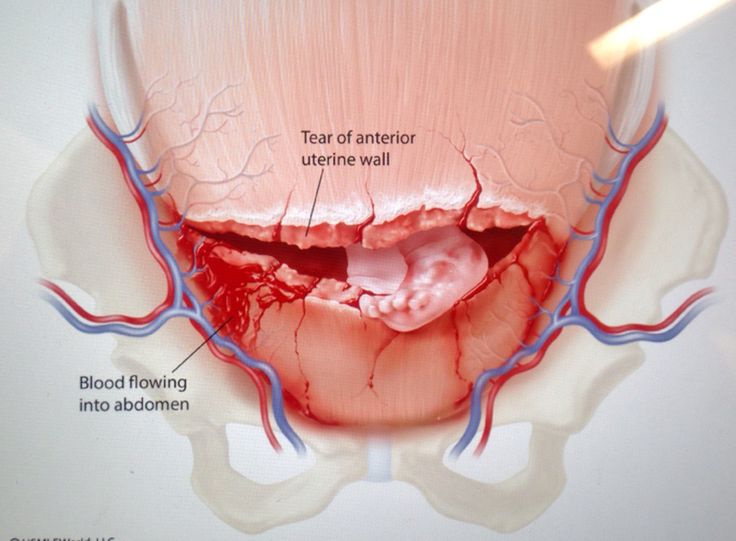OVERVIEW
Uterine rupture is a rare but life-threatening complication that can occur during an attempted vaginal birth.

WHAT MAKES US SUSPECT IT?
Risk Factors:
Prior uterine surgery (cesarean section, myomectomy), induction of labor/prolonged labor, fetal macrosomia
Initial Presentation: This is a complication that will occur during attempted vaginal delivery (especially in patients with prior history of cesarean section). Some initial things that can be observed are:
- Severe abdominal pain
- Vaginal bleeding
- Hypotension
- Tachycardia
- Fetal distress (fetal hear decelerations)
- Loss of intrauterine pressure (easier to evaluate for with patients who have a n intrauterine pressure catheter).
Physical Exam:
Vital signs: can show signs of hemodynamic instability
- Hypotension
- Tachycardia
- Elevated respiration rate
Abdominal exam:
- Palpation of fetal parts OUTSIDE suspected area of uterus
Vaginal exam:
- Vaginal bleeding
- No presenting fetal part
- Loss of fetal station is a RED flag for uterine rupture (thought to be pathognomonic)
Fetal Heart Tracing
Fetal heart monitoring can reveal signs of hypoxia/distress
- Tachycardia
- Minimal variability
- Late decelerations
Page Updated: 10.02.2016